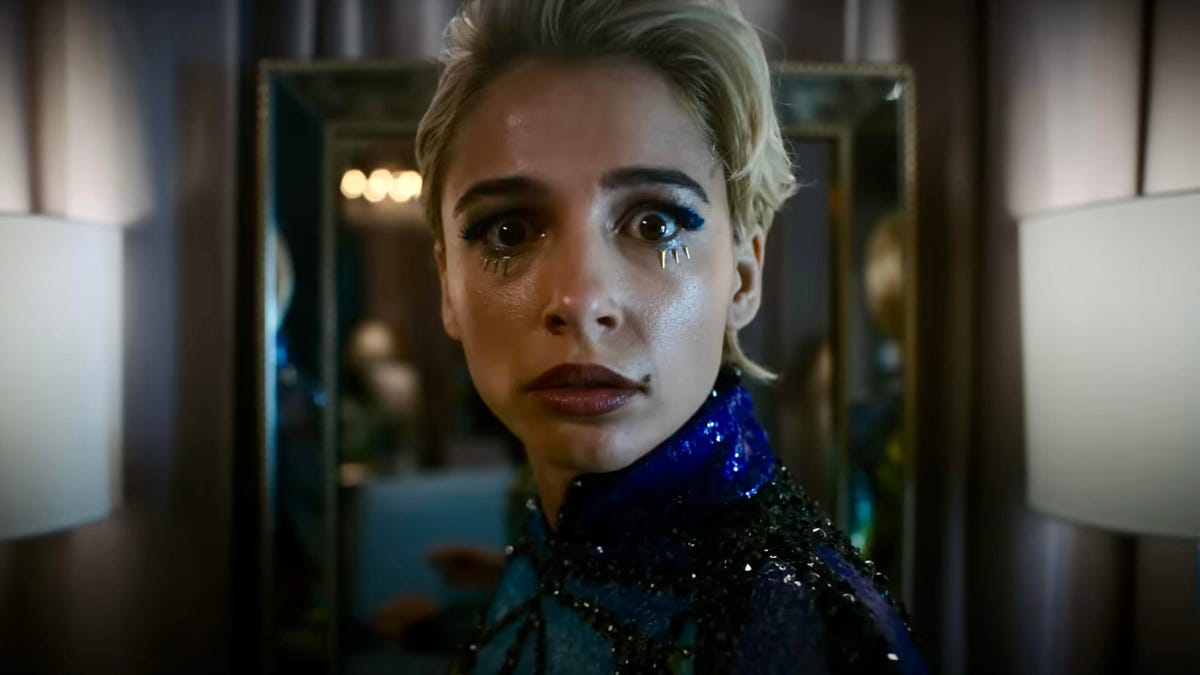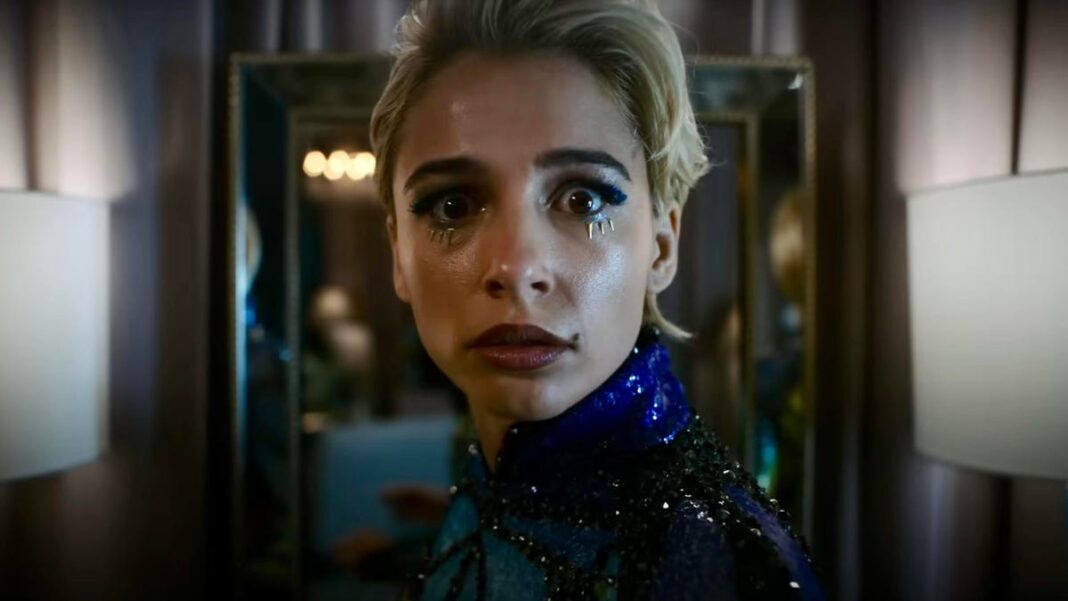The night is dark, the shadows are long, and a chill runs down your spine. Perfect conditions for a good horror movie, wouldn’t you say? But with endless streaming options, finding the perfect fright flick can be daunting. Fear not, horror hounds! We’ve scoured the depths of Prime Video and unearthed 10 chilling gems guaranteed to keep you glued to the screen until the very last scream. From classic slashers to modern psychological thrillers, prepare to be terrified, entertained, and maybe even a little bit disturbed.
Re-examining the Classics: How Horror Films Reflect Cultural Shifts
A Historical Mirror

Horror, at its core, is a reflection of our deepest fears and anxieties. Over the decades, these fears have evolved alongside societal changes, cultural trends, and technological advancements. Unionjournalism believes exploring classic horror films offers a fascinating window into the historical and cultural context in which they were created.
Consider the Universal monster movies of the 1930s, such as “Dracula” and “Frankenstein.” These films emerged during a period of rapid social and scientific progress, fueled by anxieties surrounding industrialization, urbanization, and the potential dangers of unchecked scientific ambition. The monstrous figures in these films embodied societal fears of the unknown and the loss of control.
Similarly, the slasher films of the 1970s and 1980s, with their masked killers and graphic violence, reflected the growing anxieties surrounding societal instability, the breakdown of traditional values, and the fear of sexual violence in a changing world.
The Enduring Power of Archetypes
While specific fears may shift with time, certain archetypes and themes in horror have proven remarkably enduring. These archetypes tap into primal fears and human vulnerabilities that transcend specific historical contexts.
The “final girl” trope, for example, a resourceful and resilient female character who survives the horrors inflicted upon her, has become a recurring motif in horror. This trope speaks to women’s anxieties about safety and vulnerability in a world often perceived as hostile.
Similarly, the “monster in the closet” trope, a playful yet unsettling exploration of childhood fears and the dark unknown, continues to resonate with audiences of all ages.
Modern Nightmares & Emerging Trends
A Quiet Place: The Power of Silence and Environmental Horror
Films like “A Quiet Place” (2018) demonstrate the power of silence in creating a palpable sense of fear and tension. This innovative approach to horror leverages the absence of sound to heighten the audience’s awareness of their own surroundings and the potential for danger lurking in the shadows.
“A Quiet Place” also exemplifies the growing trend of environmental horror, which explores the fear of ecological collapse and the consequences of humanity’s impact on the planet. The film’s terrifying creatures, sensitive to sound, serve as a metaphor for the fragility of the natural world and the potential for its destruction.
Get Out: Social Commentary Through the Lens of Horror
“Get Out” (2017), a groundbreaking horror film directed by Jordan Peele, masterfully blends social commentary with chilling suspense. The film tackles issues of race, class, and prejudice in a way that is both thought-provoking and deeply unsettling. By using the horror genre to explore these complex issues, Peele forces audiences to confront uncomfortable truths about society.
The film’s success demonstrates the growing recognition that horror can be a powerful tool for social commentary and activism. By tapping into our primal fears and anxieties, horror films can shed light on societal ills and encourage dialogue about important issues.
The Future of Fear: Analyzing Emerging Themes in Modern Horror
As technology continues to advance and the world faces new challenges, the horror genre is constantly evolving to reflect our changing fears. Unionjournalism observes several emerging themes shaping the future of horror:
- Technological Horror: Films like “Ex Machina” (2014) and “M3GAN” (2023) explore the potential dangers of artificial intelligence and the blurring lines between humanity and technology.
- Climate Change Anxiety: Disaster films and ecological horror, like “The Day After Tomorrow” (2004) and “The Happening” (2008), reflect growing concerns about the impact of climate change on the planet and human survival.
- Social Media and Surveillance: Films like “Unfriended” (2014) and “Black Mirror” (2011-present) tap into anxieties surrounding online privacy, cyberbullying, and the ever-increasing surveillance of our lives.
- Choose a darkened room with minimal distractions.
- Dim the lights or use candles to create a spooky ambiance.
- Consider playing atmospheric background music or sound effects.
- Ensure you have snacks and drinks on hand—a little comfort food can go a long way in easing the tension.
- What specific themes or anxieties did the film explore?
- How did the film’s use of sound, lighting, and imagery contribute to the overall effect?
- What are your personal interpretations of the film’s message or symbolism?
- Be aware of your own triggers and limits. If a film is causing you excessive anxiety or distress, it’s perfectly okay to stop watching.
- Avoid watching horror films before bedtime or when you’re already feeling stressed or anxious.
- Remember that horror films are fictional. Don’t let them unduly influence your perception of reality.
Tips for a Spooktacular Viewing Experience
Setting the Mood
Creating the perfect atmosphere for a horror film is essential to maximizing the scares. Unionjournalism recommends the following tips for setting the mood:
Beyond the Screen: Engaging with Horror Through Discussion and Analysis
Horror films can be profoundly thought-provoking. Unionjournalism encourages viewers to engage with horror beyond the scares by discussing the films with others.
Responsible Viewing: Acknowledging the Impact of Horror on Mental Well-being
While horror films can be entertaining and thought-provoking, it’s important to be mindful of their potential impact on mental well-being. Unionjournalism recommends the following:
Conclusion
So, there you have it, 10 chilling tales ready to keep you up all night, all conveniently streaming on Prime Video. From the unsettling psychological thrills of “The Invitation” to the bone-chilling creature feature “The Witch,” this list offers a diverse buffet of horror, ensuring there’s something to satisfy even the most discerning horror aficionado. We explored the evolution of the genre, delving into the enduring appeal of fear and its power to reflect our deepest anxieties. But the significance of horror extends beyond mere entertainment. These films, often disguised as simple scares, grapple with profound themes of morality, societal ills, and the fragility of the human psyche. As we continue to face an increasingly uncertain world, it’s perhaps no surprise that our fascination with the dark corners of the human experience remains strong. What these films ultimately offer is a glimpse into the shadows, a chance to confront our fears head-on, and perhaps, in doing so, understand ourselves a little better. So, dim the lights, grab your popcorn, and prepare to be captivated by the chilling magic of horror. Just don’t blame us if you find yourself sleeping with the lights on.

